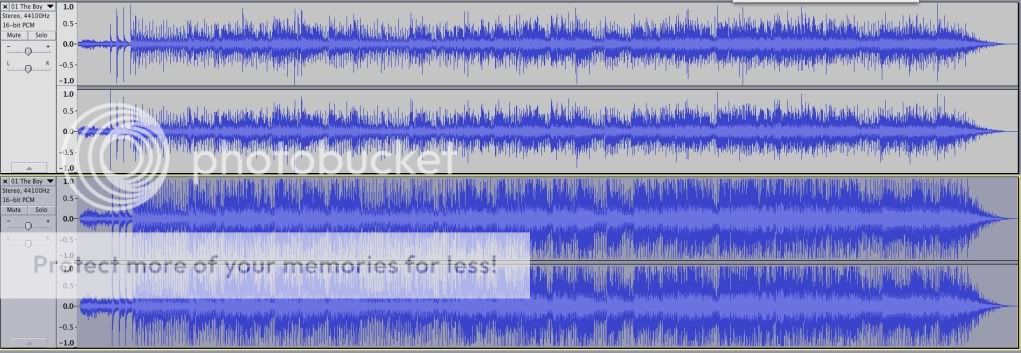I first heard this remaster last week via Spotify. I was impressed by what I heard so I decided to buy it.
What you get is a fold-out Digipack like the Beatles stereo remasters, consisting of two discs (one of them a DVD containing a documentary running nearly two and a half hours), and a revised booklet containing the lyrics, notes and period photos.
The audio CD also contains a few period demos and a nine-minute walkthrough of the title-track narrated by Paul himself.
Ok, you say, but what of the sound?
The original CD I bought in 1988 always sounded a bit lacking to me, compared to the LP I had borrowed from a friend some months earlier. In my opinion its sonic qualities epitomised everything which was wrong with early analogue to digital transfers: clear and quiet, but cold, brash and soul-less.
So what about this remaster?
There's only one word for it really: phenomenal. Sure, there is evidence of 'loudness war' dynamic compression in so far as this remaster is louder than the original CD, but it's not overdone. What is really, really obvious from the very opening notes of Forere Motloheloa's accordion on The Boy In The Bubble is that this is one quality A->D conversion of the analogue master. Everything is so spacious and well-defined. As Vusi Khumalo starts to hit the skins from 0:08, the attack and precision makes the original CD sound veiled. Bakithi Kumalo's bass comes in with a definition, weight and depth to it which is foreign to the original CD. Simon's vocals are sonorous, clearly defined and they cut through the mix with precision. The musical textures and layers never sound jumbled or tiring: everyone's just stood in your living room, playing and singing for you, occupying their own little accoustic space.
It's much of the same story for the rest of the CD. Listening to Ladysmith Black Mambazo during Homeless and on the opening to Diamonds on the Souls of Her Shoes has them sounding like they've gone and re-recorded their vocals in a bigger sound-booth, and picking out their individual voices is much easier. You Can Call Me Al has a sense of pace and rhythm which I haven't heard before.
In short, if you are a fan of the original album, I'd class this as an absolutely essential purchase. The package presentation, which so few people seem to care about in today's digital dowload era, is excellent, and the whole album sounds like 2012 studio engineers have zapped back in time to 1986 and re-recorded everyone on better equipment. Sad that all these years it's obviously always been there on the tape, but some substandard part of the original tape->CD conversion just didn't capture it.
What you get is a fold-out Digipack like the Beatles stereo remasters, consisting of two discs (one of them a DVD containing a documentary running nearly two and a half hours), and a revised booklet containing the lyrics, notes and period photos.
The audio CD also contains a few period demos and a nine-minute walkthrough of the title-track narrated by Paul himself.
Ok, you say, but what of the sound?
The original CD I bought in 1988 always sounded a bit lacking to me, compared to the LP I had borrowed from a friend some months earlier. In my opinion its sonic qualities epitomised everything which was wrong with early analogue to digital transfers: clear and quiet, but cold, brash and soul-less.
So what about this remaster?
There's only one word for it really: phenomenal. Sure, there is evidence of 'loudness war' dynamic compression in so far as this remaster is louder than the original CD, but it's not overdone. What is really, really obvious from the very opening notes of Forere Motloheloa's accordion on The Boy In The Bubble is that this is one quality A->D conversion of the analogue master. Everything is so spacious and well-defined. As Vusi Khumalo starts to hit the skins from 0:08, the attack and precision makes the original CD sound veiled. Bakithi Kumalo's bass comes in with a definition, weight and depth to it which is foreign to the original CD. Simon's vocals are sonorous, clearly defined and they cut through the mix with precision. The musical textures and layers never sound jumbled or tiring: everyone's just stood in your living room, playing and singing for you, occupying their own little accoustic space.
It's much of the same story for the rest of the CD. Listening to Ladysmith Black Mambazo during Homeless and on the opening to Diamonds on the Souls of Her Shoes has them sounding like they've gone and re-recorded their vocals in a bigger sound-booth, and picking out their individual voices is much easier. You Can Call Me Al has a sense of pace and rhythm which I haven't heard before.
In short, if you are a fan of the original album, I'd class this as an absolutely essential purchase. The package presentation, which so few people seem to care about in today's digital dowload era, is excellent, and the whole album sounds like 2012 studio engineers have zapped back in time to 1986 and re-recorded everyone on better equipment. Sad that all these years it's obviously always been there on the tape, but some substandard part of the original tape->CD conversion just didn't capture it.



